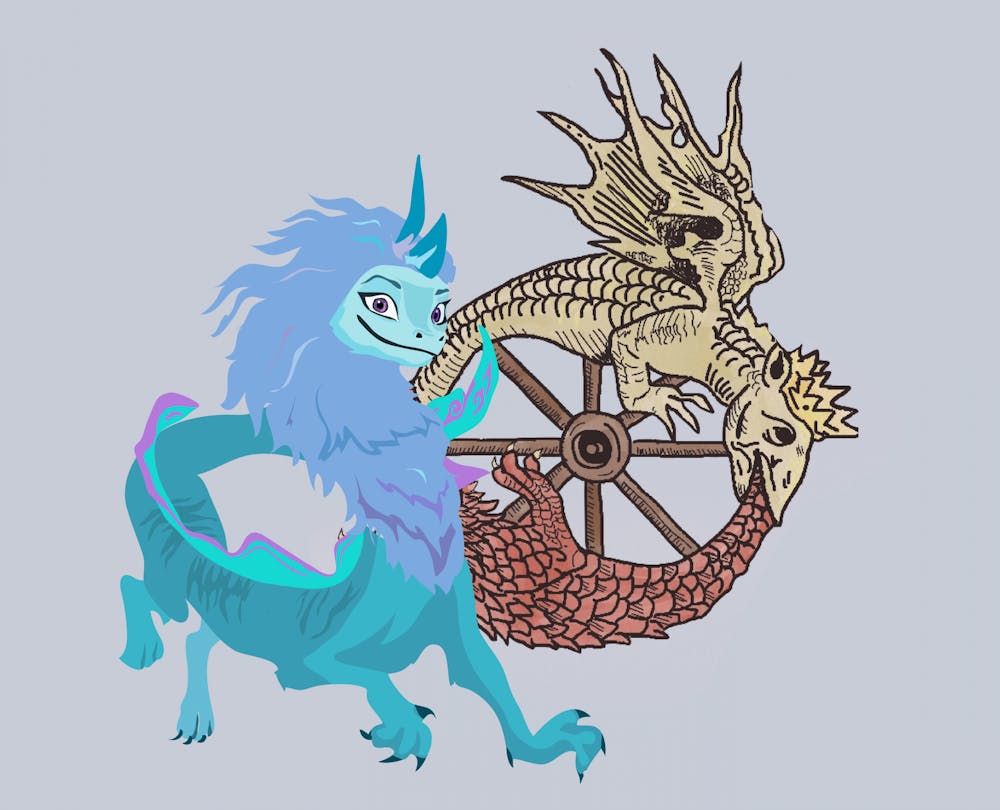The brilliant minds at Disney somehow never run out of ideas, and their latest installment of Raya and the Last Dragon is as mystical and adventurous as ever. The film follows young Raya on her hunt for the titular last dragon, the only remaining individual of its kind, so that it can help save her world from sinister monsters.
Kumandra, the fictional land where the story takes place, is based on a handful of countries from Southeast Asia: Thailand, Vietnam, Cambodia, Laos, Singapore, Indonesia, and the Philippines, as well as Brunei, Timor–Leste, and Burma.
Audiences were previously displeased with the cultural inaccuracy of Disney’s only two movies centered around Asia and the Pacific Islands—Mulan and Moana, which draw influence from China and Polynesia respectively. This time, the crew did more in–depth research and consulting—and, screenwriters Qui Nguyen and Adele Lim both have Southeast Asian heritage.
Nguyen, who loves action movies, shared that he wanted to incorporate martial arts from the real world into the film. In particular, Raya and the Last Dragon showcases Indonesian and Malaysian Pencak silat, Muay Thai from Thailand, traditional Indonesian wrestling, and Arnis from the Philippines.
Some viewers expressed frustration with this blending of various Asian cultures—is it problematic to mash all of these distinct countries into a single, indecipherable monolith? In response, Lim pointed out that her home in Malaysia is often a melting pot of various cultures. She shared that Malaysian street food has such a delicious reputation because of its many different, borrowed elements. The fictional land of Kumandra similarly combines aspects of neighboring places to build something both comfortingly familiar and intriguingly new.
Still, Sisu the dragon’s appearance is confounding to a majority of audiences. Why does she look like Elsa’s furry alter ego, with a Disney princess face instead of a dragon snout? At first, this stylistic choice seemed like an oversight, but the filmmakers shed light on the inspiration behind her design in an interview with Polygon. Looking beyond Western and even East Asian dragons, Sisu is based on the Nāga: serpentine creatures associated with water, representing luck and power. Nguyen explains that the Nāga was chosen to be a symbol of life and hope in the film, influencing protagonist Raya to “open up and trust.”
As for the reason behind Sisu’s fluffy blue body and bright, sparkly eyes, director Don Hall shared that they wanted to make her more approachable. They moved “away from the reptilian” in order to “make sure she didn’t just look like an animal.” It’s understandable that the creators wanted to give her more life, but at least now we know the explanation for Sisu’s uncanny appearance and similarity to the Snow Queen.
Positive and accurate cultural representation has been sought after for years. The impact it can have on children and young adults is significant: To see someone onscreen who looks like you, comes from the same place as you, or partakes in similar rituals as you proves that diversity is to be celebrated. But is representation really enough in the grand scheme of things?
It might be a coincidence that Raya and the Last Dragon was released just as awareness for anti–Asian hate crimes reached an all–time high. Anti–Asian sentiment has existed in the United States for decades upon decades—however, since the onset of COVID–19 in March of 2020, the situation has only worsened. The film’s premiere feels like a lazy, or just plain ignorant, response to the state of the world at the moment.
Disney has publicly stated its support for the organizations Asian Americans Advancing Justice (AAJC) and Stop AAPI Hate, but actions speak louder than words. If Disney is charging a $30 Premier Access fee for subscribers to watch Raya and the Last Dragon on Disney+, a platform where subscribers already pay roughly $80 a year, can’t at least some of that money be donated to those fighting against Asian–targeted hate crimes?
In order to prove that they truly care about Asian Americans and Pacific Islanders, Disney needs to shift from representation to activism. Right now, with its empty words of allyship, all they’re doing is exploiting a community in need of help for its own profit.

